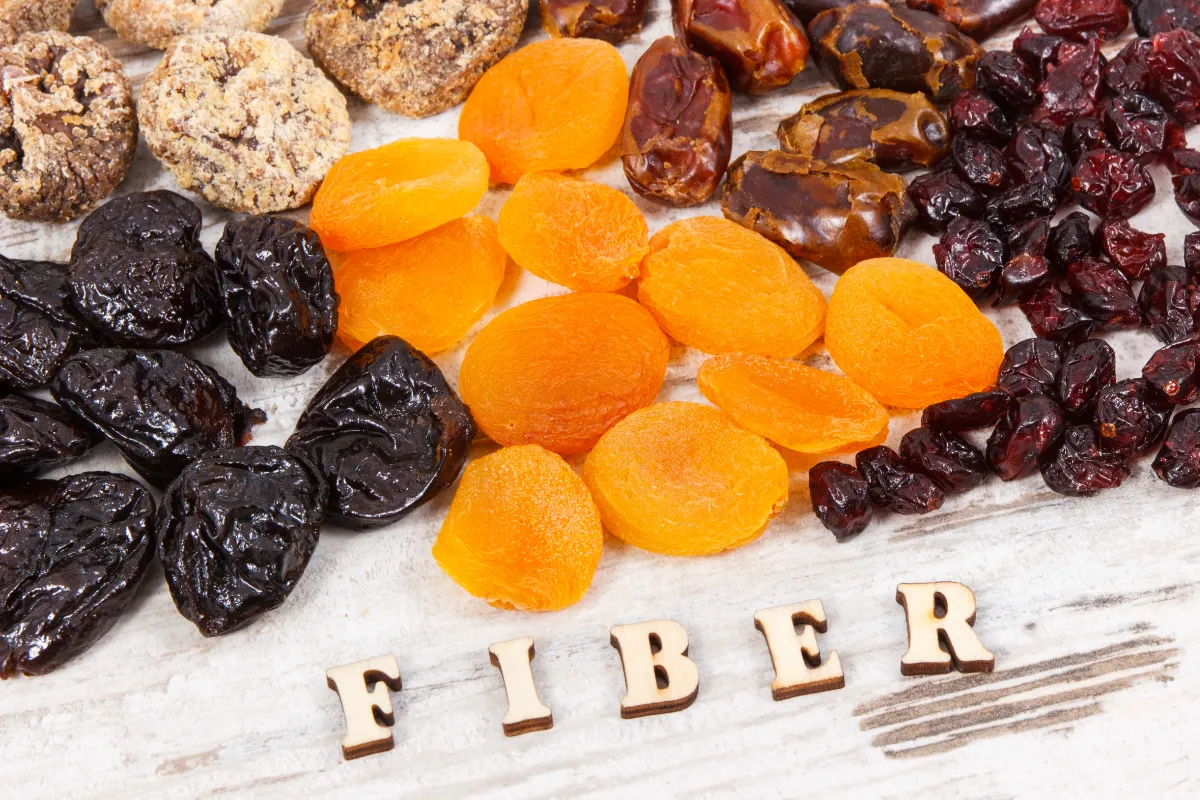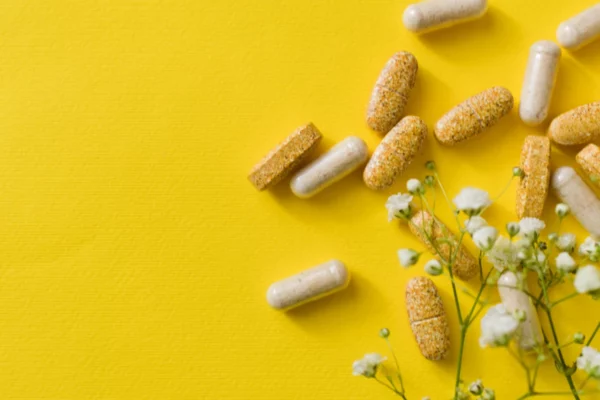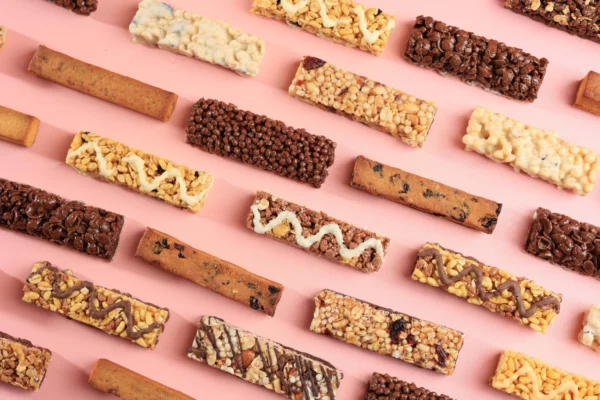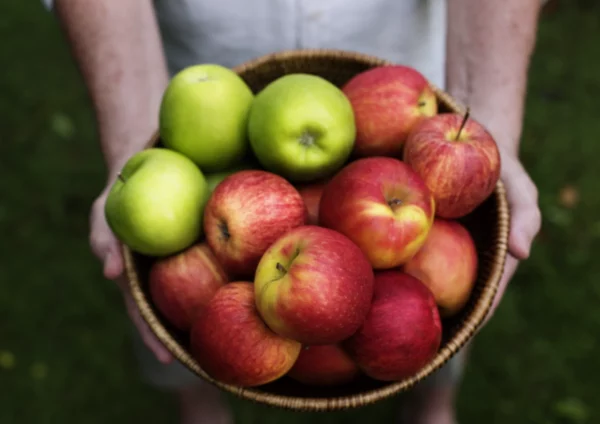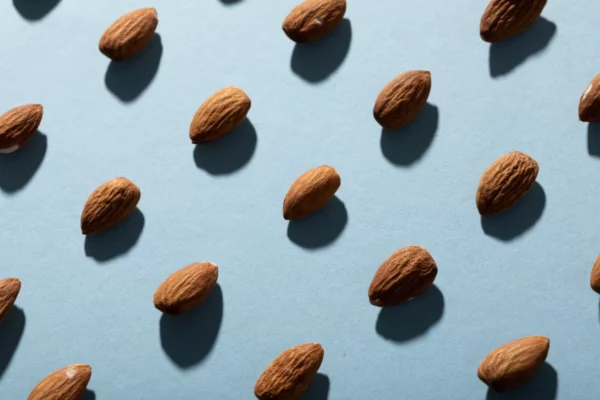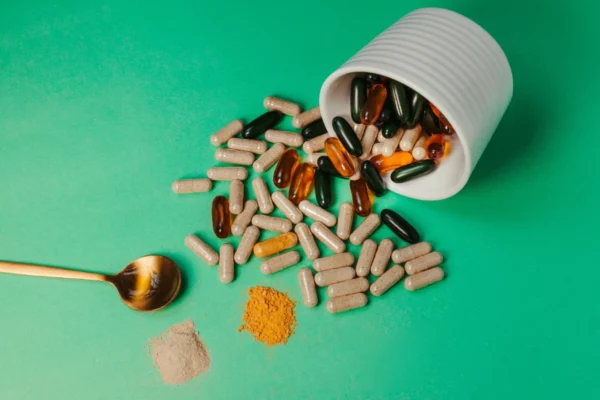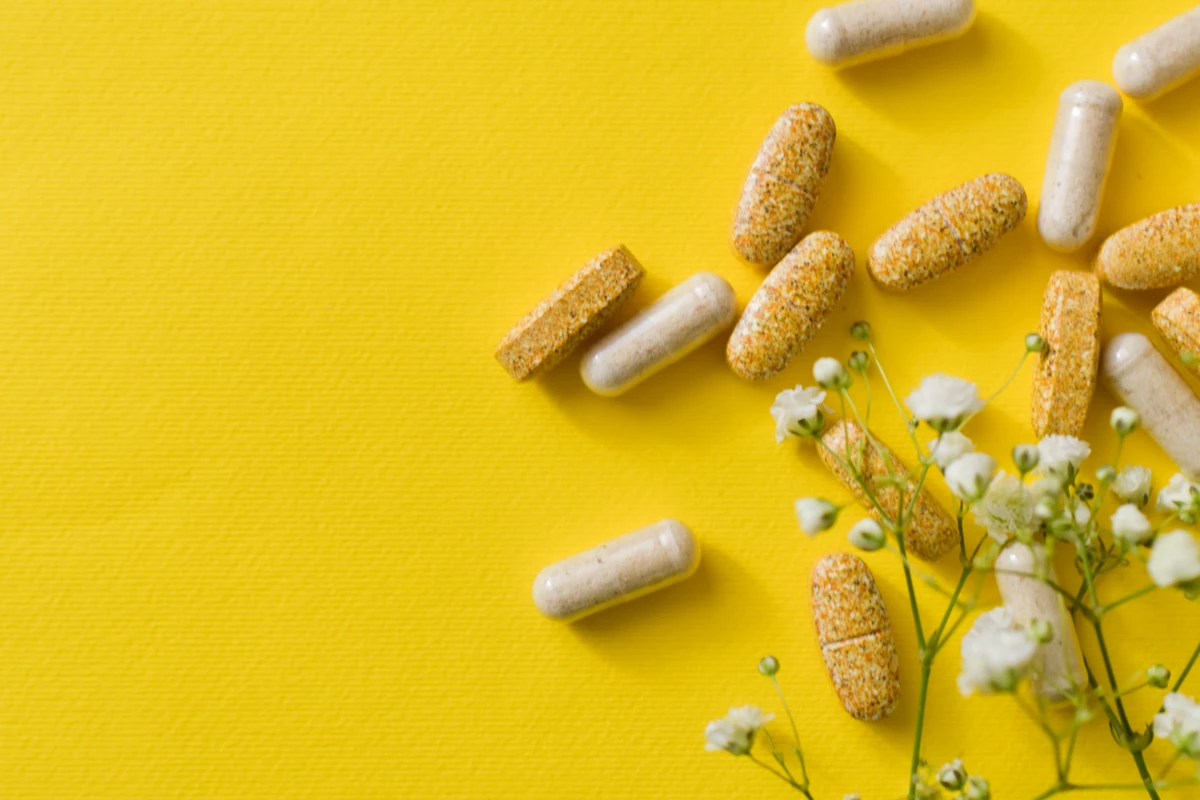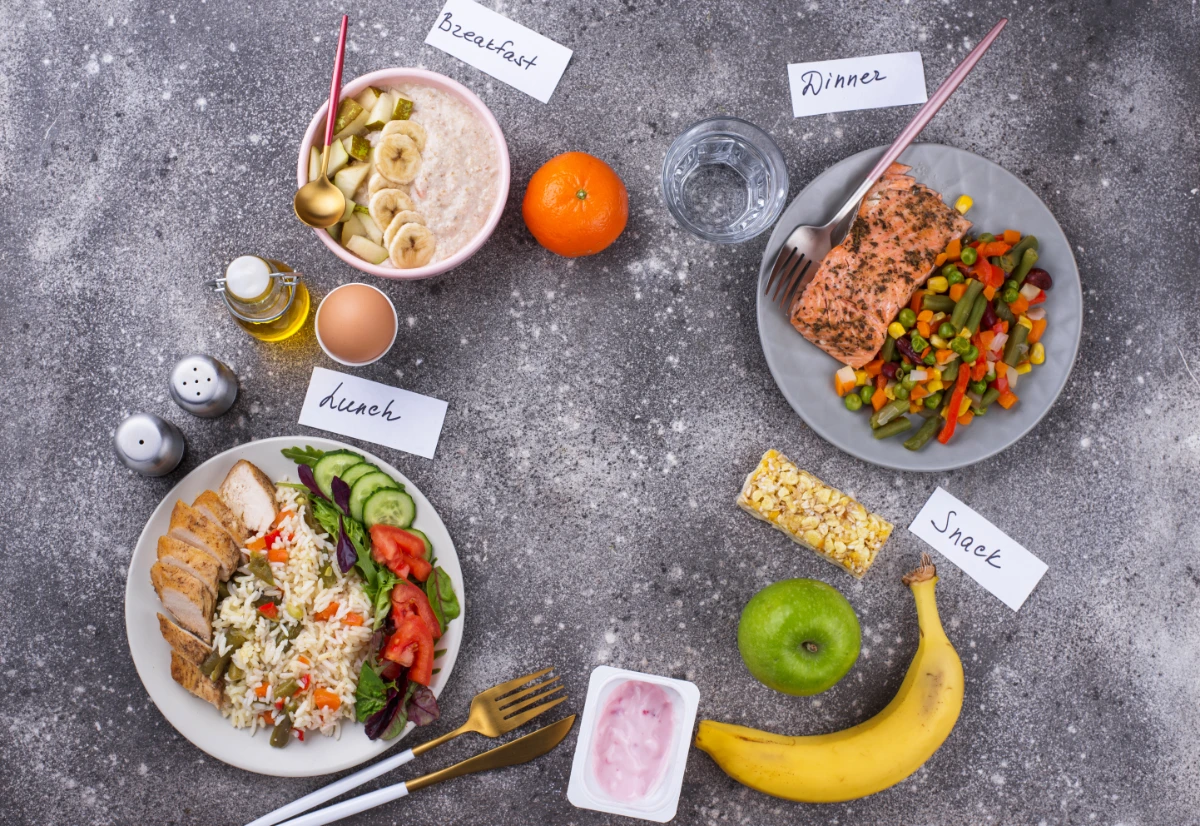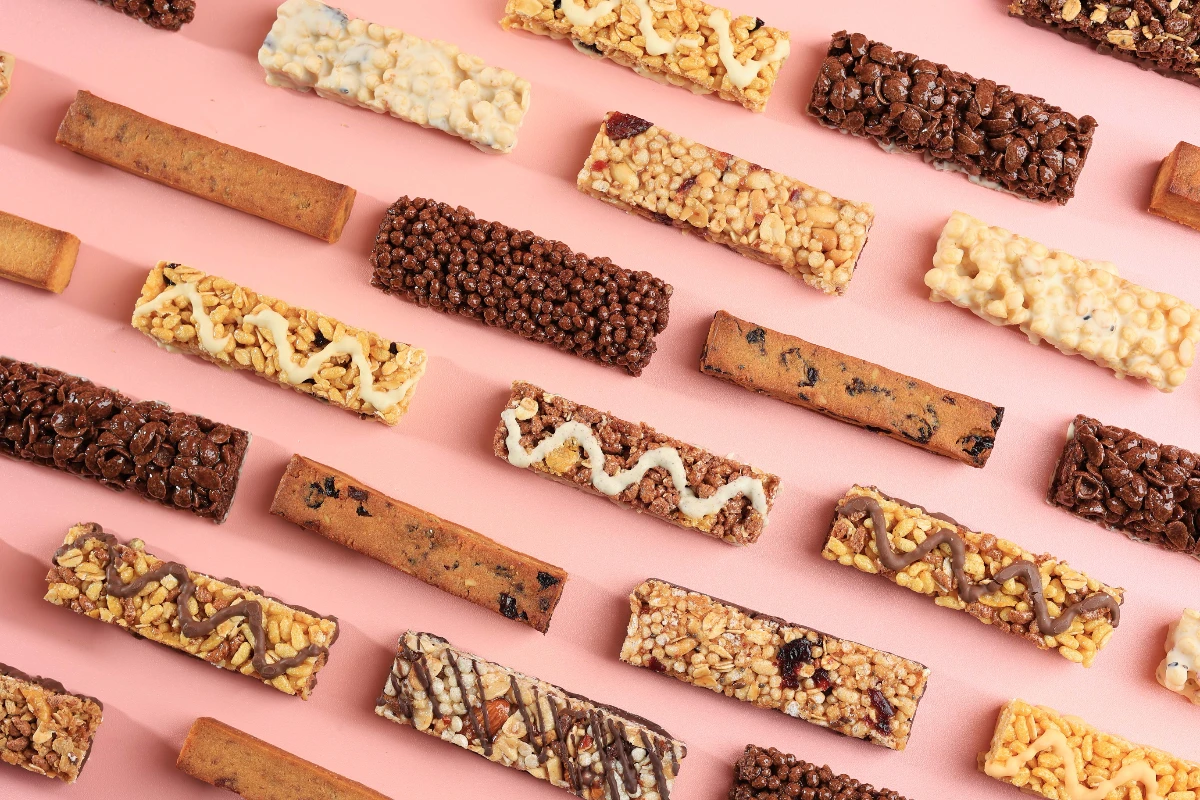Insoluble fiber is a type of dietary fiber that doesn’t dissolve in water. Unlike soluble fiber, which forms a gel-like substance in your digestive tract, insoluble fiber adds bulk to stool and helps food move through the digestive system more efficiently. It’s primarily known for its role in preventing constipation and promoting overall digestive health. Foods rich in insoluble fiber are crucial for a balanced diet and are often lower in calories but high in nutritional value.
Key Takeaways: Insoluble Fiber Foods
| Food | Insoluble Fiber (per serving) | Serving Size | Calories | Other Benefits |
|---|---|---|---|---|
| Whole Wheat Bread | 1.5–2 g | 1 slice (28g) | ~70 kcal | B vitamins, iron, magnesium |
| Brown Rice | 2 g | 1 cup (195g) | ~216 kcal | Manganese, phosphorus, magnesium |
| Wheat Bran | 6 g | 1/4 cup (15g) | ~30 kcal | High in protein, excellent for gut health |
| Popcorn | 3.6 g | 3 cups (24g) | ~93 kcal | Antioxidants, low calorie |
| Nuts (Almonds) | 3.5 g | 1 oz (28g) | ~160 kcal | Healthy fats, Vitamin E, magnesium |
| Broccoli | 2 g | 1 cup (91g) | ~55 kcal | Vitamin C, Vitamin K, folate |
| Carrots | 1.6 g | 1 cup (128g) | ~52 kcal | Beta-carotene, Vitamin A |
| Cauliflower | 2 g | 1 cup (100g) | ~25 kcal | Vitamin C, antioxidants |
| Kidney Beans | 5 g | 1 cup (177g) | ~225 kcal | Protein, iron, magnesium |
| Apples (with skin) | 3 g | 1 medium (182g) | ~95 kcal | Vitamin C, potassium |
What is Insoluble Fiber?
Insoluble fiber is a type of carbohydrate that doesn’t dissolve in water. It passes through the digestive system largely intact, helping to add bulk to stools and accelerate their passage through the intestines. It’s especially helpful for people dealing with constipation, irregular bowel movements, or digestive health issues like diverticulosis.
Main Functions of Insoluble Fiber:
- Promotes regular bowel movements
- Prevents constipation
- Supports digestive health
- Promotes Fullness
- Reduces the risk of certain gastrointestinal diseases like diverticulitis
Top Foods Rich in Insoluble Fiber
1. Whole Wheat Products
Whole wheat flour, bread, and pasta are excellent sources of insoluble fiber. They also provide additional nutrients like B vitamins, iron, and magnesium.
- Insoluble Fiber Content: 1.5–2g per slice of bread
- Serving Size: 1 slice (28g)
- Health Benefits: Whole wheat is high in B vitamins and has been shown to reduce the risk of heart disease.
2. Brown Rice
A great alternative to white rice, brown rice is high in insoluble fiber and adds bulk to meals, making you feel fuller for longer.
- Insoluble Fiber Content: 2g per cup (195g)
- Serving Size: 1 cup (195g)
- Health Benefits: Brown rice is a good source of manganese and magnesium, and it supports metabolic health.
3. Wheat Bran
Wheat bran is one of the richest sources of insoluble fiber and is commonly used as a dietary supplement to improve bowel health.
- Insoluble Fiber Content: 6g per 1/4 cup
- Serving Size: 1/4 cup (15g)
- Health Benefits: Wheat bran is great for gut health and can help prevent constipation and diverticular disease.
4. Popcorn
Air-popped popcorn is a light, satisfying snack that’s rich in insoluble fiber and relatively low in calories.
- Insoluble Fiber Content: 3.6g per 3 cups
- Serving Size: 3 cups (24g)
- Health Benefits: Popcorn is high in antioxidants and can help improve digestive regularity.
5. Nuts and Seeds
Nuts like almonds are rich in insoluble fiber, healthy fats, and essential nutrients like Vitamin E.
- Insoluble Fiber Content: 3.5g per 1 oz (28g)
- Serving Size: 1 oz (about 23 almonds)
- Health Benefits: They offer a wealth of nutrients, including magnesium, which is beneficial for heart health.
6. Broccoli
Broccoli is packed with both soluble and insoluble fiber, making it a great choice for overall digestive health.
- Insoluble Fiber Content: 2g per cup (91g)
- Serving Size: 1 cup (91g)
- Health Benefits: High in Vitamin C and Vitamin K, broccoli also supports immune function and bone health.
7. Carrots
Carrots are a versatile vegetable rich in fiber and well-known for their high beta-carotene content.
- Insoluble Fiber Content: 1.6g per cup (128g)
- Serving Size: 1 cup (128g)
- Health Benefits: Carrots are excellent for eye health and immune system support.
8. Cauliflower
Cauliflower is another cruciferous vegetable that is high in insoluble fiber and loaded with essential vitamins.
- Insoluble Fiber Content: 2g per cup (100g)
- Serving Size: 1 cup (100g)
- Health Benefits: Cauliflower contains antioxidants that help fight inflammation.
9. Kidney Beans
These legumes are a powerhouse of nutrition, high in both insoluble fiber and protein.
- Insoluble Fiber Content: 5g per cup (177g)
- Serving Size: 1 cup (177g)
- Health Benefits: Kidney beans are great for heart health due to their fiber and magnesium content.
10. Apples (with skin)
The skin of apples is rich in insoluble fiber, making it important to eat apples unpeeled.
- Insoluble Fiber Content: 3g per medium apple (182g)
- Serving Size: 1 medium apple (182g)
- Health Benefits: Apples are a great source of Vitamin C and can aid in weight management.
Nutritional Benefits of Insoluble Fiber Foods
Insoluble fiber is calorie-free but packed with health benefits. Besides promoting digestive health, these foods often provide a range of vitamins and minerals, depending on the source. Here are some common nutrients found in high-fiber foods:
Micronutrients in Insoluble Fiber Foods:
- Magnesium: Helps regulate muscle and nerve function.
- Potassium: Supports healthy blood pressure levels.
- Vitamin E: A powerful antioxidant.
- B Vitamins: Essential for energy production.
- Vitamin C: Supports immune health and skin repair.
Dietary Considerations
- Suitable for: Vegans, vegetarians, gluten-free (except for wheat-based products), and Whole30 diets.
- Avoid for: People with wheat allergies or those following a low-FODMAP diet may need to avoid certain high-fiber foods like wheat bran or beans.
Potential Allergens
- Wheat and Gluten: Found in whole wheat bread and pasta, these may cause digestive issues for individuals with celiac disease or gluten sensitivity.
- Nuts: Nuts like almonds can be allergens, so people with nut allergies should avoid them.
Culinary Tips and Recipe Ideas
Flavor Profile & Texture
Insoluble fiber foods vary in taste:
- Grains and Seeds: Have a hearty, slightly nutty flavor.
- Vegetables: Often have a mildly bitter or earthy taste.
- Nuts: Offer a crunchy texture and a rich, slightly sweet flavor.
Common Recipes and Pairings:
- Whole Wheat Bread: Perfect for sandwiches or toast with avocado.
- Brown Rice: Use as a base for stir-fries, grain bowls, or salads.
- Popcorn: A simple snack seasoned with olive oil and sea salt.
- Kidney Beans: Ideal in chili, soups, and stews.
- Broccoli and Cauliflower: Great in stir-fries, roasted, or added to salads.
Storage Tips
- Grains: Store in an airtight container in a cool, dry place for up to 6 months.
- Nuts: Keep in a sealed container in the fridge to avoid them going rancid.
- Vegetables: Refrigerate in a produce drawer and consume within 3–7 days for maximum freshness.
FAQ: Insoluble Fiber Foods
- What is the difference between soluble and insoluble fiber? Insoluble fiber doesn’t dissolve in water and helps promote bowel regularity, while soluble fiber dissolves in water and helps lower cholesterol and control blood sugar.
- How much insoluble fiber should I eat daily? It’s recommended to consume around 25–30g of total fiber daily, with a good portion of that being insoluble fiber.
- Are high-fiber foods low in calories? Most high-fiber foods are low in calories, especially vegetables and whole grains.
- Can insoluble fiber cause digestive issues? Too much insoluble fiber can cause bloating and discomfort, especially if you’re not used to a high-fiber diet.
- What’s the best way to increase my fiber intake? Gradually add more whole grains, vegetables, and nuts to your diet, and drink plenty of water.
- Can I get insoluble fiber from supplements? Yes, but it’s generally better to get fiber from whole foods for additional nutrients.
- Is insoluble fiber good for weight loss? Yes, it can help you feel fuller longer, aiding in weight control.
- Are fruits a good source of insoluble fiber? Yes, especially fruits with skin like apples, pears, and berries.
- Can I eat insoluble fiber foods if I have IBS? Some people with IBS may find that high-fiber foods worsen their symptoms, so it’s best to consult a healthcare provider.
- Does cooking affect the fiber content of vegetables? Cooking doesn’t destroy fiber, but it can affect the texture and make some foods easier to digest.
